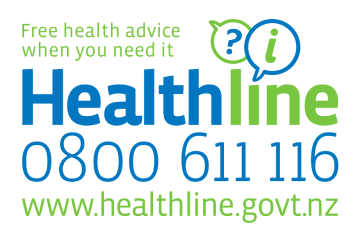Growing Pains
Growing Pains
Growing pains are common in tamariki (children). They usually happen in the legs and come on at night. Learn more about growing pains and how to manage them.
Key points about growing pains in children
- growing pains are common in tamariki
- they often happen in the evening or at night
- growing pains are usually felt in the legs
- growing pains are generally harmless and do not indicate anything serious
- if your child has ongoing or severe pain, take them to a health professional
What are growing pains?
Growing pains are aching pains that commonly happen in the legs. Growing pains are generally harmless and do not indicate anything serious. Despite their name, growing pains are not directly related to growth spurts.
What are the symptoms of growing pains?
Sensation
Tamariki with growing pains may say they have an aching, burning or throbbing-like pain.
Location
Growing pains usually affect both legs. The pain is often felt in the muscles of the thighs, calves, shins or behind the knees.
For some tamariki, growing pains can happen in the arms or other parts of the body, but this is much less common.
Timing
Growing pains usually happen in the evening or at night. They may wake your child from sleep but usually go away by the morning.
Growing pains can happen during the day, but they are not normally bad enough to stop tamariki from doing their usual activities.
Growing pains don’t happen every day. There can be days, weeks or months between episodes.
Other symptoms
Some tamariki with growing pains also get headaches.
What causes growing pains in children?
The exact cause of growing pains is not known. Despite their name, growing pains are not caused by growth spurts.
One theory is that growing pains may be related to exercise. But, in most tamariki with growing pains, there is nothing obvious that brings them on.
Who commonly gets growing pains?
Growing pains usually happen in tamariki aged between 3 and 12 years. Some tamariki have growing pains off and on for years, but they usually go away by mid-teens.
Should I keep a record of my child’s pain?
Keeping a record of your child’s growing pains can be helpful. It can help you to work out if there is any pattern to their pain. Some tamariki may have pain on days when they have been more active or busy.
Things you can track include:
- when the pain happens (what days and times)
- where your child feels the pain
- how long the pain lasts
- if they’d done any activity that day
Take this record with you to the health professional.
How are growing pains diagnosed?
There is no medical test for growing pains. A health professional will talk to you about your child’s symptoms. They may examine your child to look at how flexible their joints are. Very flexible joints can be normal in some tamariki.
They will also want to rule out other causes of the pain.
Does my child with growing pains need any treatment?
There is no specific treatment for growing pains. Growing pains usually settle down and go away with time.
Things you can try at home which may help manage your child's pain include:
- massaging the area
- placing a heat pack over the affected area
- a warm bath before bed
- gentle muscle stretching
There’s no need to stop your child from doing physical activity.
Pain medicine
A health professional may recommend you try some mild pain medicine such as paracetamol or Ibuprofen to help with your child's pain. You must follow the dosage instructions on the bottle. It is dangerous to give more than the recommended dose.
Tamariki with very flexible joints may get pain more so on days when they’ve been very busy or active. For these tamariki, a health professional may recommend giving pain medicine before bed on busy days.
Could there be another reason for my child’s pain?
There are a number of different causes of leg pain in tamariki. A health professional will talk to you about your child’s symptoms to rule out other causes of the pain.
Growing pains don’t cause a limp and they shouldn’t stop your child from doing their usual daily activities.
When should I take my child to see a health professional?
Take your child to a health professional if:
- the pain isn’t going away
- the pain is only in 1 leg
- they have a limp with the pain
- the painful area feels hot or is swollen
- the pain is in their joints
- they have pain from an injury
- they have a fever, loss of appetite or weight loss with the pain
- they have a rash or unusual bruising on the skin
- the pain is stopping them from doing their normal activities
- they are missing school because of pain
- they are unwell with the pain
If you are worried about your child for any reason, take your child to a health professional.
This page last reviewed 06 August 2024.
Do you have any feedback for KidsHealth?
If you have any feedback about the KidsHealth website, or have a suggestion for new content, please get in touch with us.
Email us now